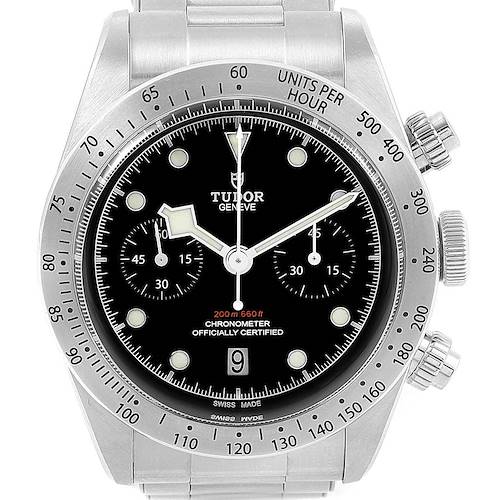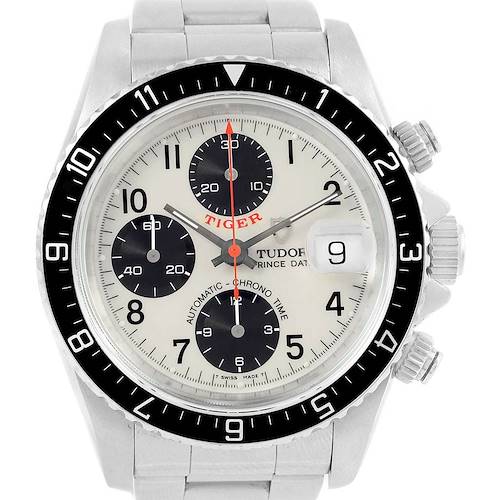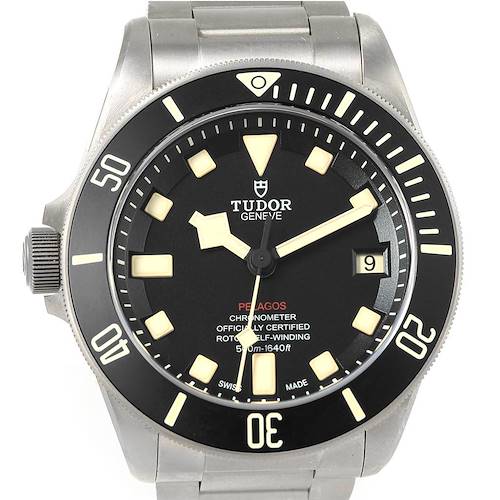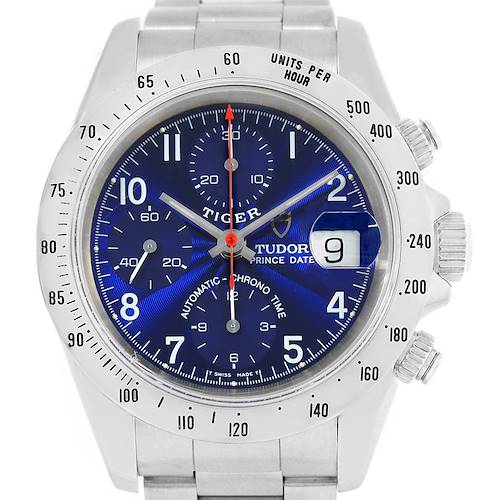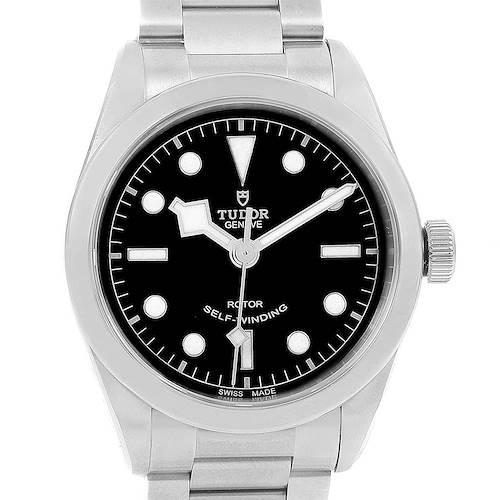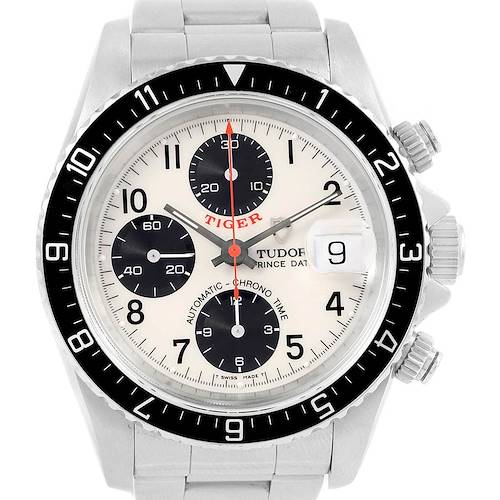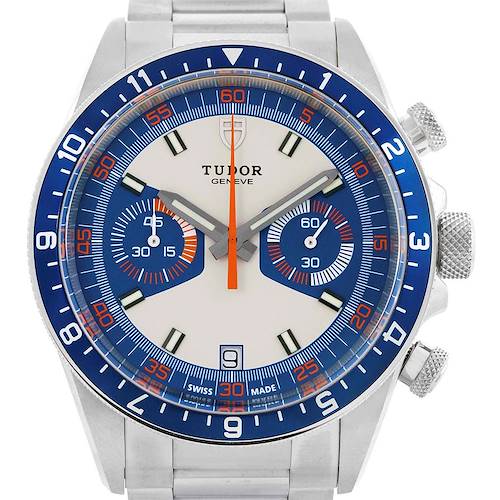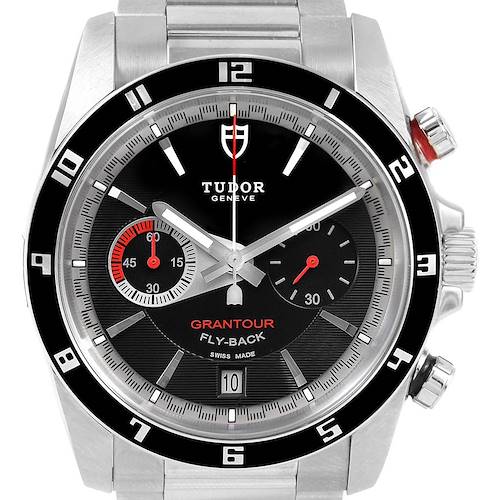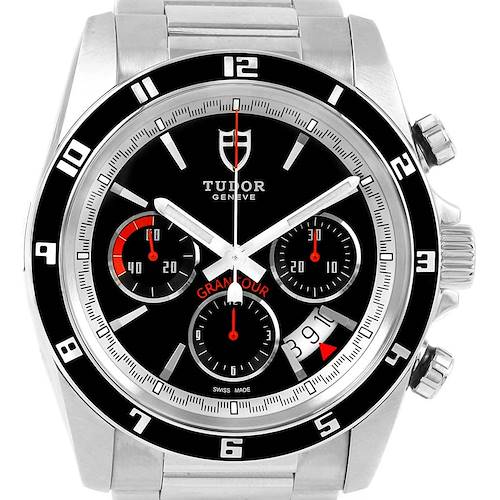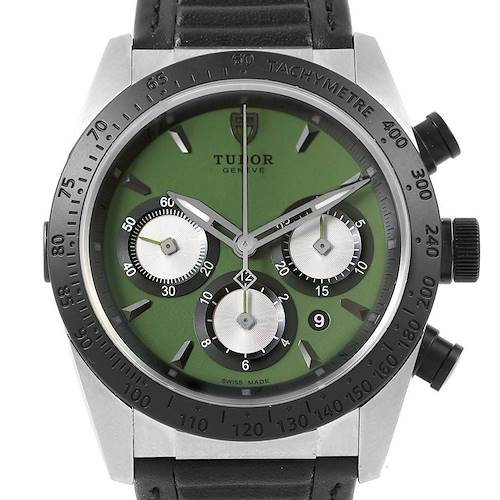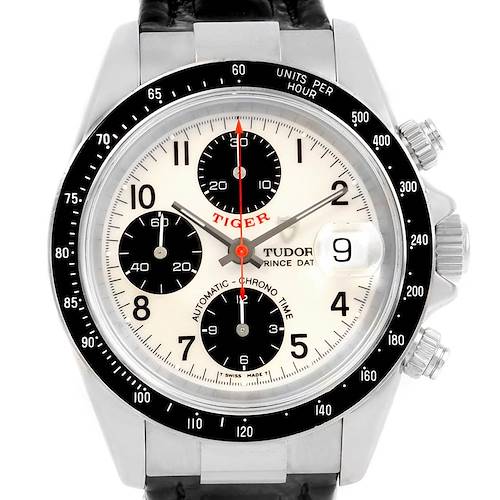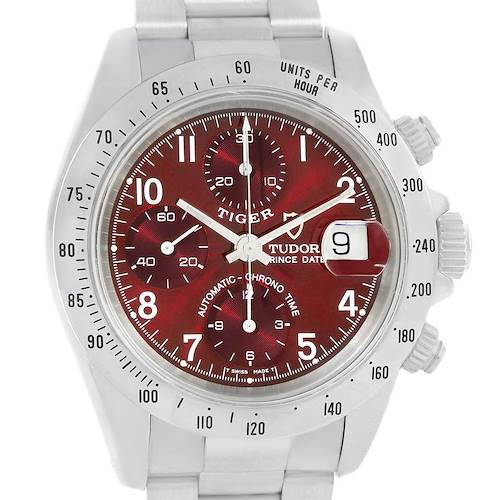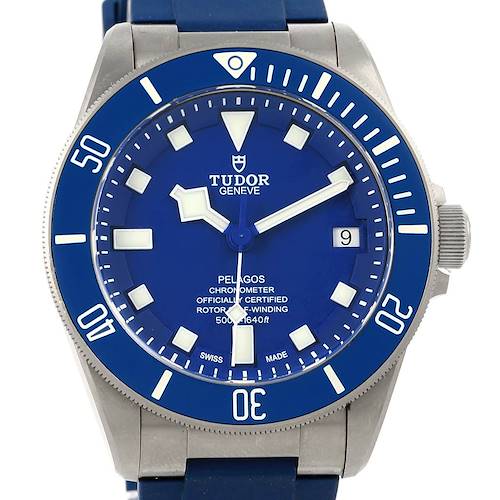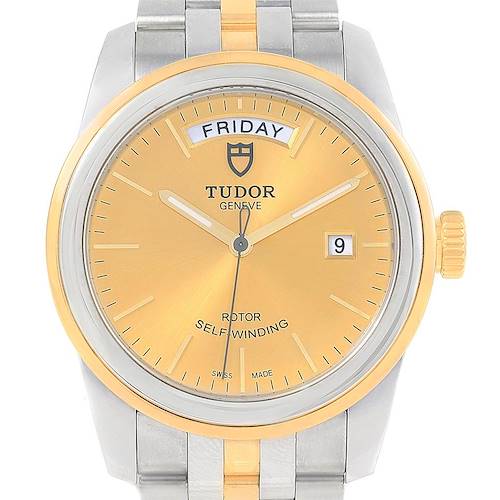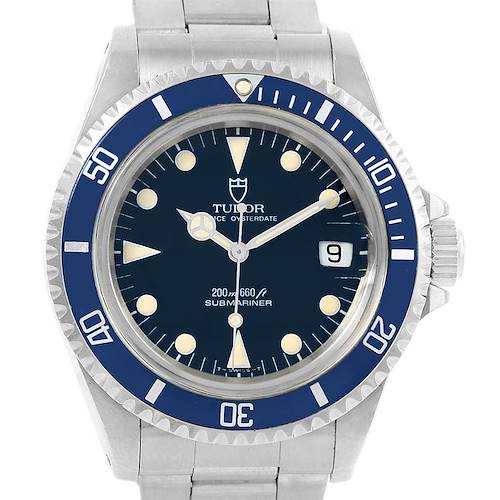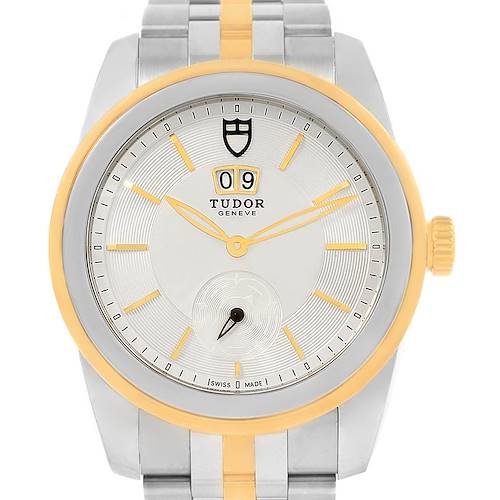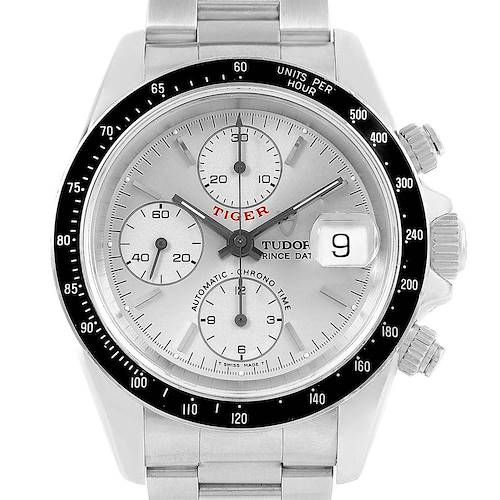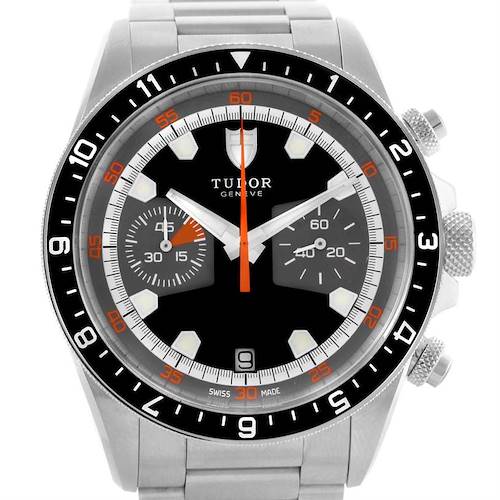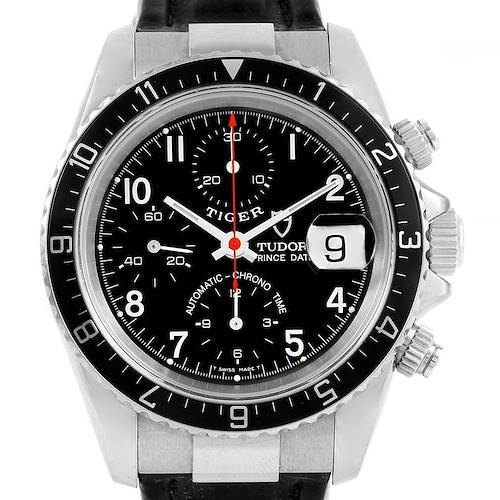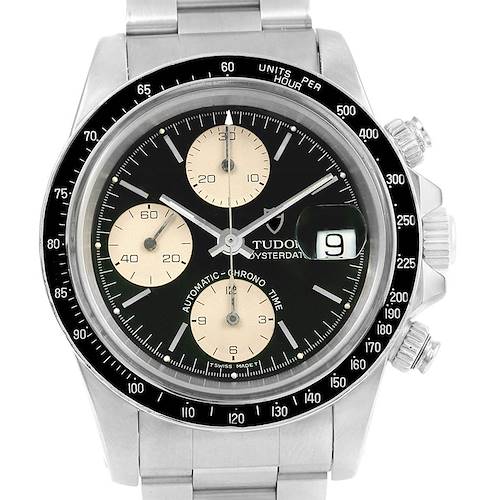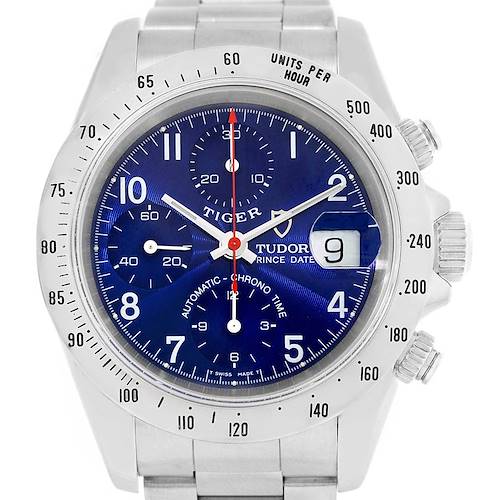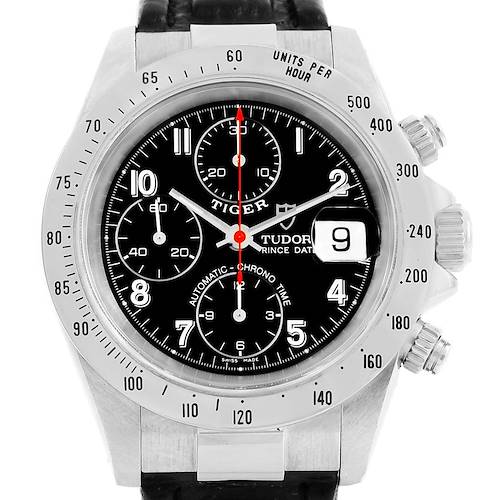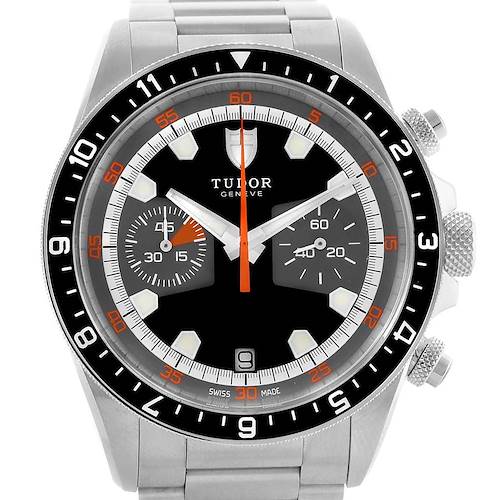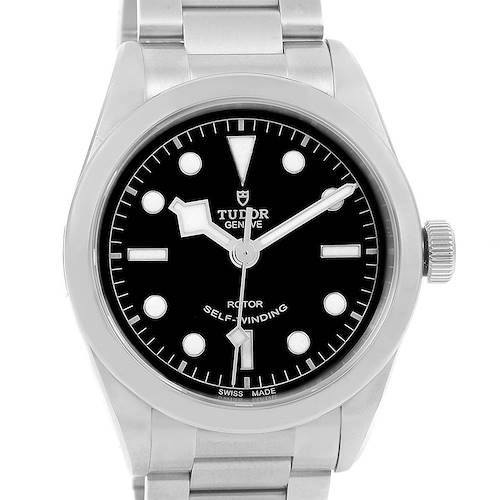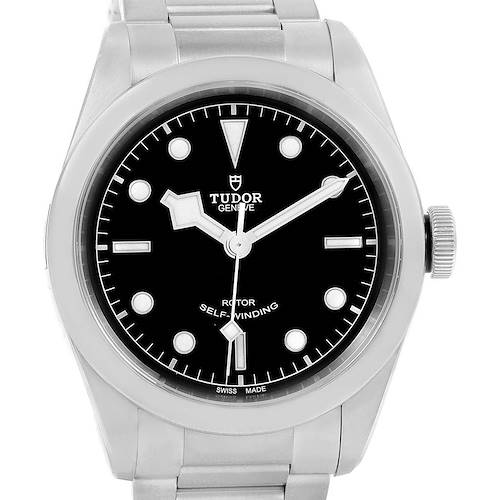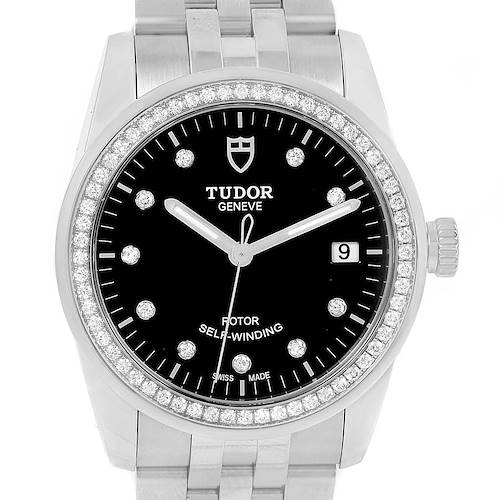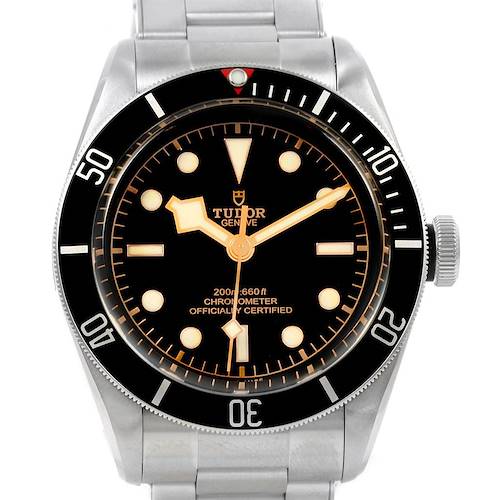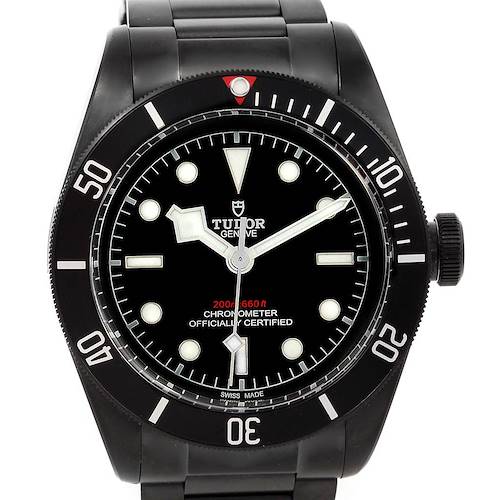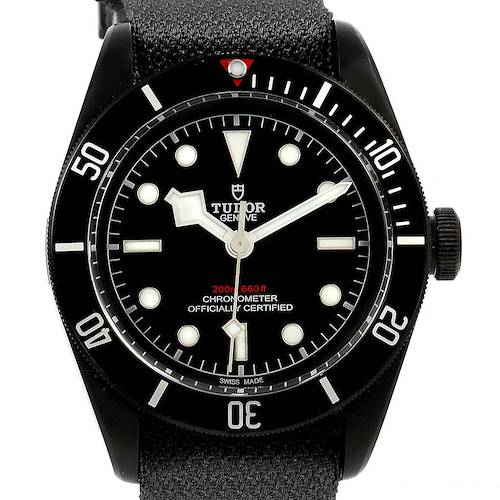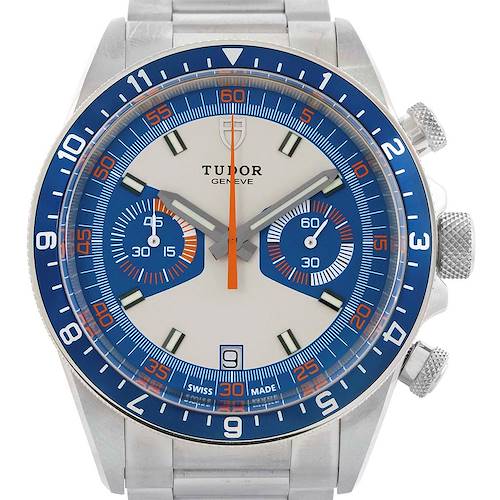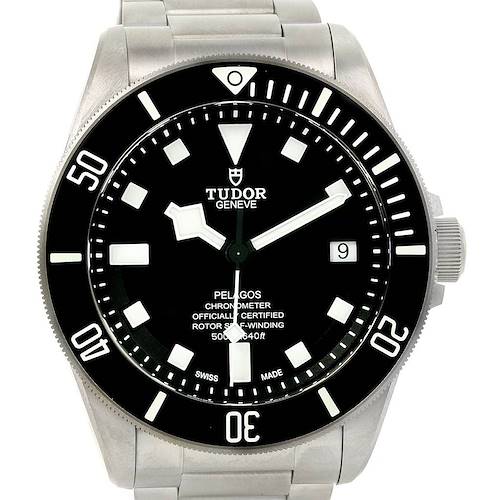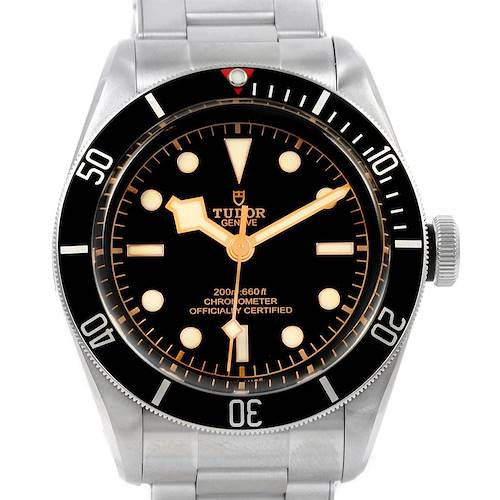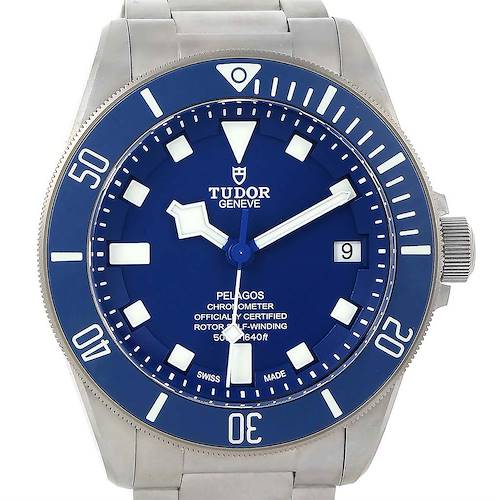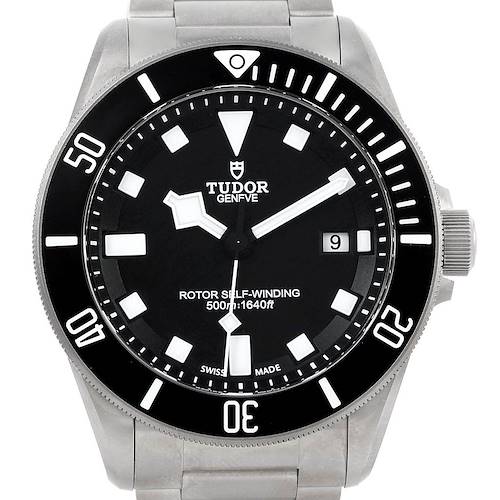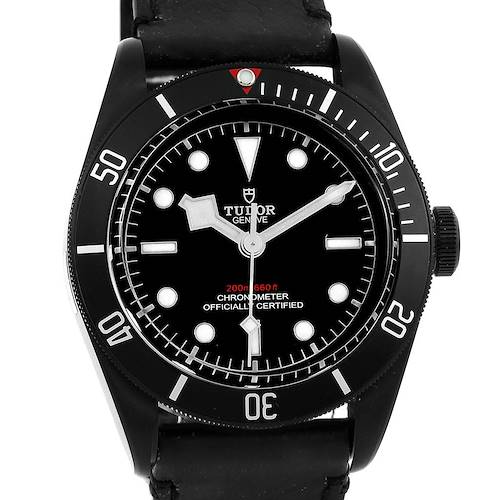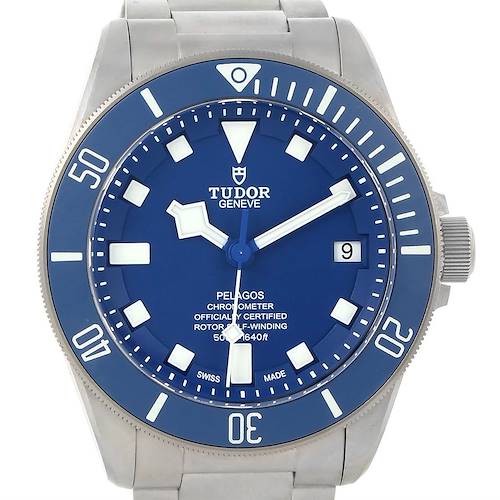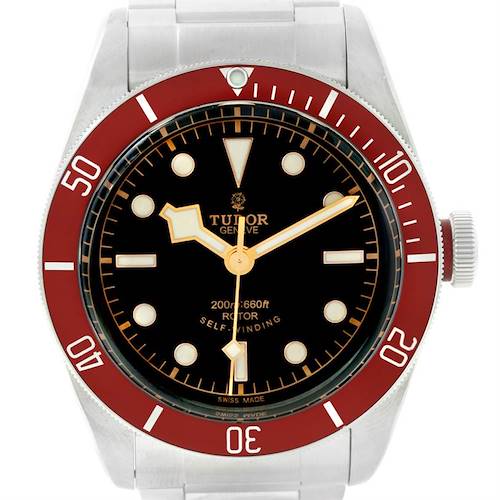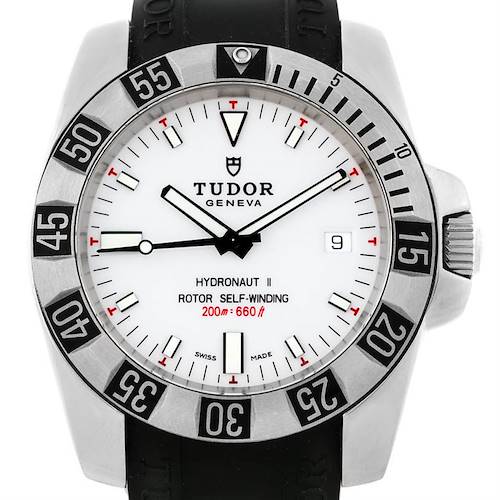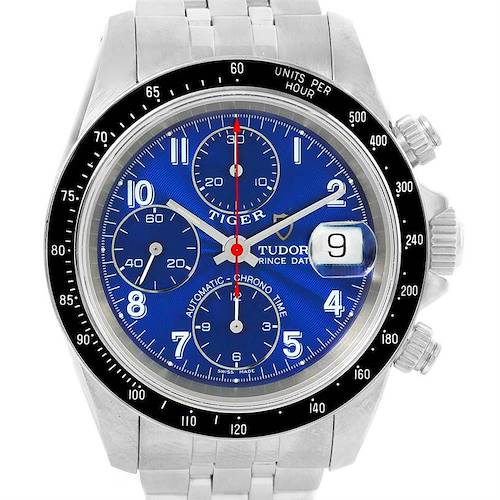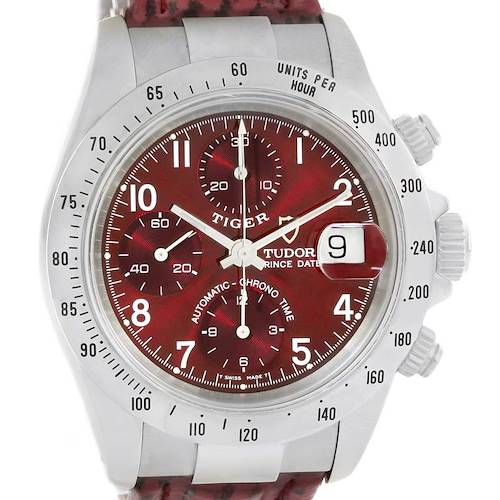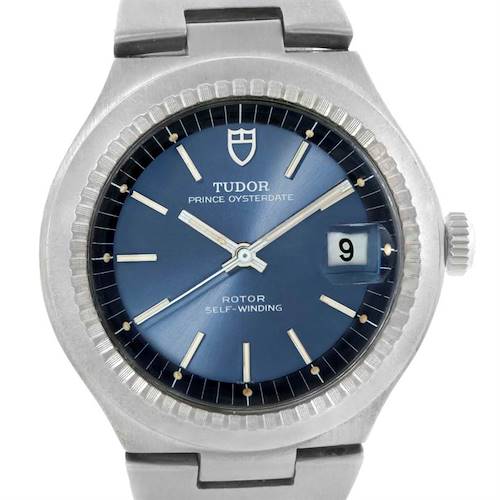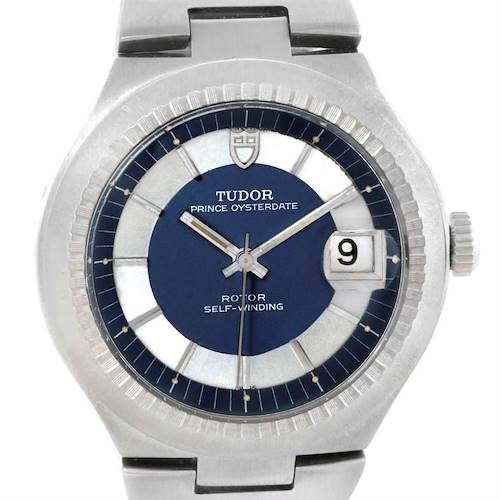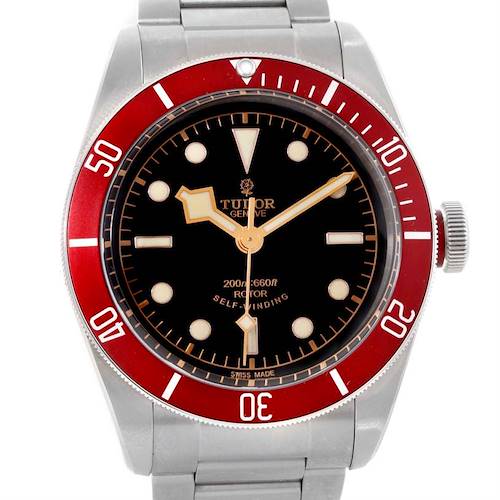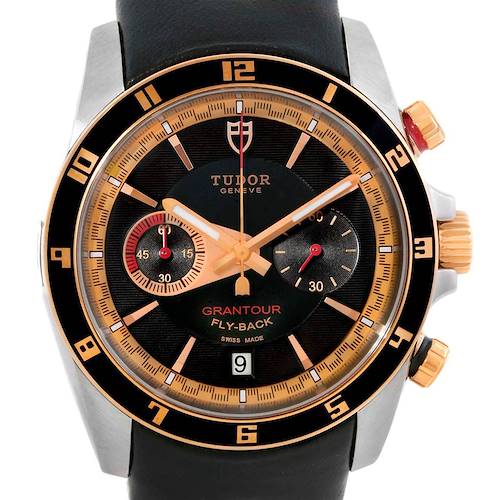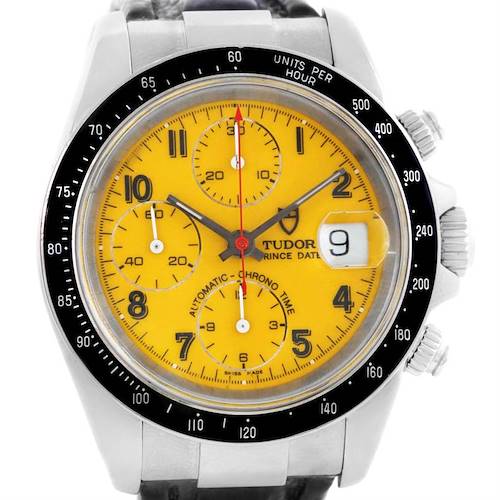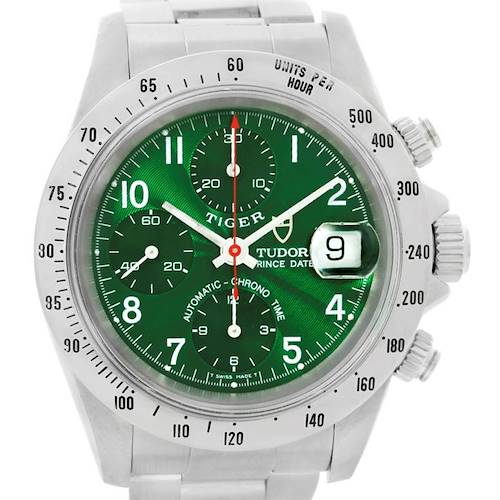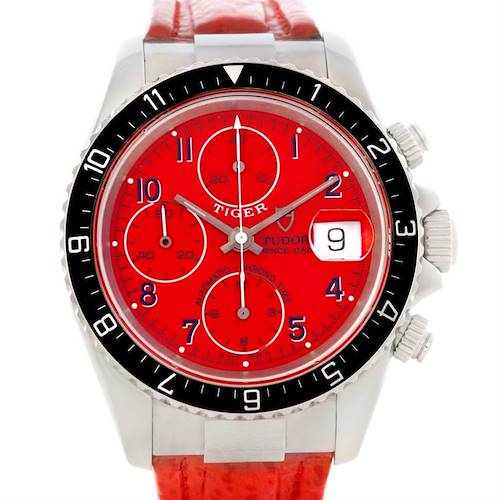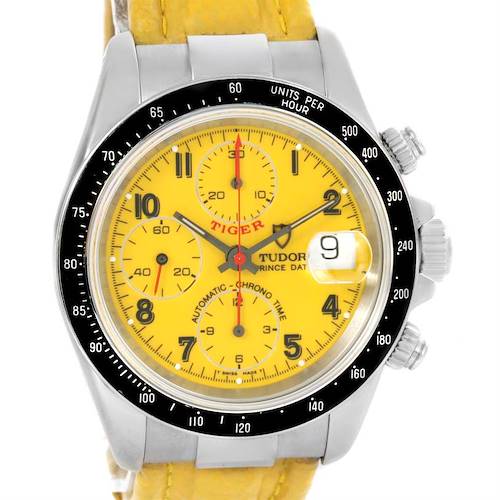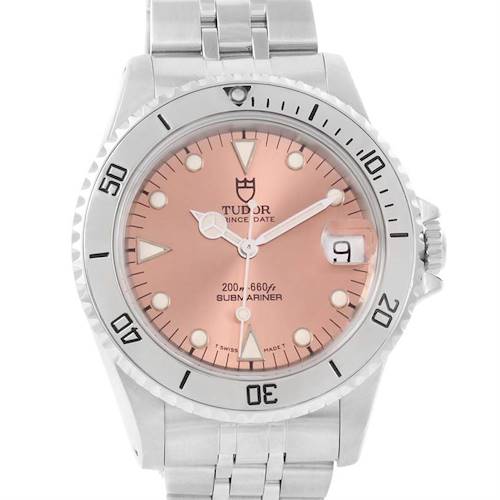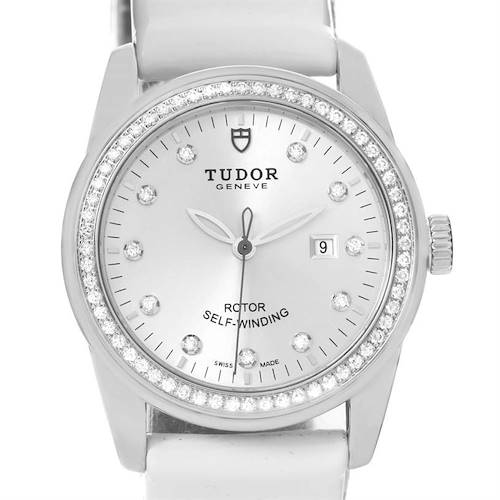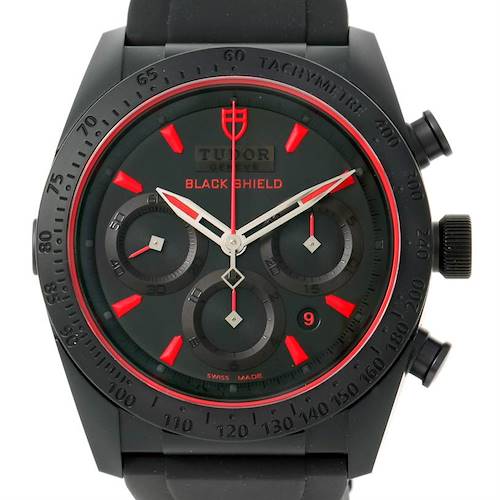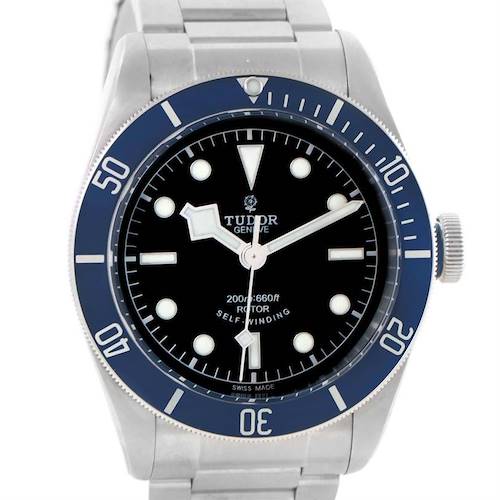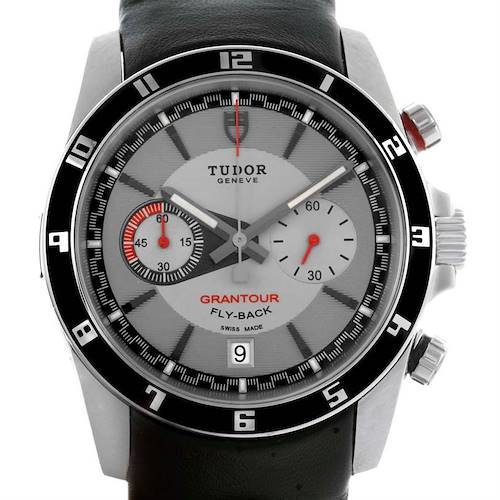- CALL US (404) 814-1814
- LIVE SUPPORT
- EMAIL US
-
WISHLIST (0)
-
CART(0)

Tudor Watch Collection
731 MATCHES FOUND
SwissWatchExpo ARCHIVE - RECENTLY SOLD
Tudor Watches Collection
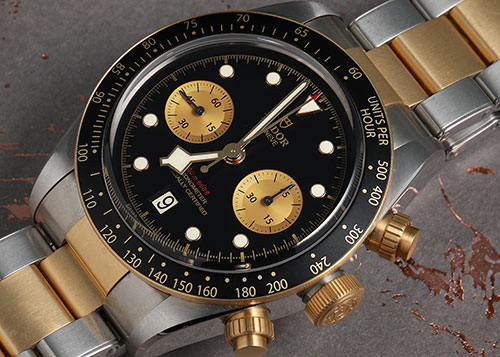
The Tudor watch brand is world renowned for its variety of high-quality modern and heritage-inspired timepieces for sports, diving, and all-occasion use. Tudor was established in 1926 by Hans Wilsdorf, the founder of Rolex, as a brand with all the character and elegance of its older sibling, but at a more accessible price point.
The brand used the same materials as Rolex, except for reliable but economical third-party movements. So, for most of its history, Tudor was known as the subsidiary of Rolex, and considered by collectors as a cost-effective alternative.
Tudor has worked hard and succeeded in building a reputation for itself, as a brand that not only stands for price-worthy quality, but also one that can build reliable and stylish timepieces.
Tudor’s current collection spans a range of styles wide enough to suit a variety of tastes – from dive watches like the Black Bay and Pelagos, sport watches like the Heritage Chrono and Grantour, to classic styles like the Royal and Glamour. Explore our selection of Tudor watches at SwissWatchExpo.com.
A BRIEF HISTORY OF TUDOR WATCHES
Tudor was founded in 1926 by Anglophile and watchmaking visionary Hans Wilsdorf, the same man who founded Rolex. He understood that while many wanted to buy Rolex watches, the price was prohibitive for some. Therefore, he decided to create watches with the same materials as Rolex, except for modified third-party movements, which would bring down the cost. To this day, Tudor remains a sister company to Rolex, both companies being owned by the Hans Wilsdorf Foundation.
In 1946, he established “Montres TUDOR S.A”, with watches from the brand sold alongside Rolex watches. Tudor’s watches, while paired with third-party movements, used Rolex cases and were assembled using the same facilities.
Tudor also used advertising with Wilsdorf’s face appearing prominently, accompanied by his personal endorsement for the watches. Campaigns focused on the robust qualities of the watches, and the same level of dependability as Rolex, at more modest prices.
Brand names were also shared between the two companies, particularly after Tudor’s adoption of the Oyster case and the self-winding rotor. This move also facilitated Tudor’s production of tool watches.
It launched the Tudor Oyster in 1947, introducing the waterproof Oyster case previously exclusive to Rolex. This was followed by the Tudor Prince in 1952, the brand’s first self-winding model.
In the 1950s, the French Navy was also involved in research for a Tudor diving watch. By 1954, the brand’s first diving watch, the Tudor Submariner, would see the light of day. With the passage of time, the Tudor Submariner was enhanced with further modification, and dive watches became a specialty for Tudor.
The 1970s saw the arrival of various chronograph models to the Tudor line, namely the Oysterdate (1970), the “Montecarlo” (1970) and the Oysterdate “Big Block”, the first Tudor chronograph with a self-winding movement (1976).
Despite its rich history, the Tudor brand lost its way around the 1980s - 1990s, and demand for the watches waned. It also completely disappeared from the U.S. market beginning in 1996.
In 2007, Tudor began the process of reorienting the brand globally. With the arrival of Davide Cerrato as its marketing, design, and product development head, Tudor entered a new era of creativity and began releasing new designs – many of which dig deep into their archives for inspiration.
By 2009, they launched the Tudor Grantour Chronograph and the Tudor Glamour, both classic everyday pieces. This was followed in 2010 by the Heritage Chrono, which was inspired by the Tudor “Montecarlo” from the 1970s.
In 2012, Tudor released the Heritage Black Bay, a dive watch inspired by the design of the Tudor Submariner models from the 1950s. The Black Bay is Tudor’s most popular model yet, and has since grown into a collection, with different complications and styles, from chronographs and GMTs, to blacked out PVD versions.
Tudor watches had been using ETA movements since their resurgence, and in 2015, introduced their first in-house movement, the MT5621. Tudor has used in-house movements for the Black Bay collection since 2016, while they use a variety of in-house and ETA-based movements for other collections.
Tudor’s return in the 2010s has been a resounding success, and the brand continues to be a rising star in the world of horology. Today, Tudor watches are known for their combination of style, Swiss watchmaking expertise, and exceptional value.
ABOUT THE TUDOR WATCHES COLLECTION
While Tudor’s first watches were inspired by iconic styles from the Rolex line up, Tudor had stepped out of its sibling brand’s shadow, to create their very own key models -- from collector-centric vintage styles, to modern designs that fit various needs. Below is a primer on the most popular Tudor watches from the past to the present.
VINTAGE TUDOR WATCHES
Tudor Oyster (1952 - 1999)
The Tudor Oyster watches make use of the “Oyster” case developed by Hans Wilsdorf. Inspired by the shellfish, the Oyster was the first waterproof case created for watches, with a system that hermetically seals the movement and protects it from dust and moisture.
Tudor Submariner (1954 – 1999)
Developed at the same time as the Rolex Submariner, the Tudor Submariner was a modestly priced yet equally durable option to the former. It also had more diverse models – it came in varying sizes, a blue dial version, and in some versions, the iconic “snowflake” hand.
MODERN TUDOR WATCHES
Tudor Glamour (2009)
The Tudor Glamour is a line of dress watches with a retro-chic design. Models come in steel or two-tone steel and yellow gold finishes, often with diamonds on the dial. The line consists of several sub-collections – the Glamour Double Date, Glamour Date + Day, and Glamour Date.
Tudor Heritage Chrono (2010)
The Heritage Chrono takes design cues from the “Montecarlo” chronograph of the 1970s, whose dial resembles the famous roulette wheels of Monaco. The modern interpretation comes in three designs – two grey scale colors, and a blue and orange colorway.
Tudor Heritage Black Bay (2012)
The Tudor Heritage Black Bay has become the brand’s signature range of watches. The first Black Bay watch launched in 2010 took inspiration from the brand’s dive watches from the 1950s, whose legibility and ruggedness can still be seen in the entire collection today.
The Heritage Black Bay has grown into a series of watches, which offer different functionalities, but have crucial qualities that make them a uniform collection. These include the snowflake hands and the “Big Crown”.
The current line-up of the Black Bay includes the following models:
Heritage Black Bay – the base model with a distinctly vintage dial, available in blue, black, and burgundy
Black Bay Fifty-Eight – named after a Tudor timepiece from 1958, which captures the retro essence with its smaller 39mm case
Black Bay Chrono – a watch that combines the dive watch features of the Black Bay with classic racing chronograph attributes
Black Bay Bronze – the classic Black Bay in a bronze finish and larger 43mm case
Black Bay 32 / 36 / 41 – a simpler take on the Black Bay with a smooth bezel and minimalist dial. It comes in 32, 36 and 41mm sizes
Black Bay P01 – short for “prototype 1”, this watch is based on blueprints of experimental watches, produced by Tudor for the US military in the 1950s
Tudor Pelagos (2011)
The Tudor Pelagos is a modern diver and tool watch that pushes the standard Tudor water depth rating from 200m to 500m. To date, it’s the only titanium watch in the Tudor (and even Rolex) family. It has the signature snowflake hands, but with square markers on the dial.
TUDOR REFERENCE and SERIAL NUMBERS
Tudor uses reference and serial numbers to document their sale and manufacture.
REFERENCE NUMBERS
The reference number or model number, is a set of letters and digits assigned to a particular group of watches with the same design and material. Below are Tudor’s reference numbers:
Tudor Chronographs
- 79280
- 79260
- 79260
- 9430/0
- 9430/0
- 9420/0
- 79160
- 7169/0
- 7149/0
- 7031/0
- 7032/0
- 7033/0
- 70330N
- M70330B-0001
- 79350
- 79363N – limited edition
- 42000CR
Tudor Submariners
- 7016
- 7021
- 9401/0
- 79090
- 79190
- 7922
- 7924
- 7928
- 7923
- 75090
- 94110
- 9411/0
- 94400
- 75190
- 76100
Tudor Black Bay
- 79220B
- 79220R
- 79229N
- M79230R
- M79230N
- M79230B
- M79030N
- M79580
- M79580
- M79500
- M79500
- M79540
- M79540
- M79830RB
- M79350
- M79730
- M79733N
- M79250BM
- M79230DK
- 70150 Basel 2019 novelty
- 79250BA Basel 2019 novelty
- M79580
- M79580
- M79500
- M79500
- M79540
- M79540
Tudor Pelagos
- 25500TN
- M25610TNL
- M25600TB
- M25600TN
SERIAL NUMBERS
If the reference number refers to a group of watches with the same design, the serial number is unique to just one particular timepiece. The serial number can be used to determine the watch’s date of production, or to identify the origin of the timepiece. Below are the serial number sequences for Tudor and their estimated date of production.
| SERIAL NUMBER | YEAR |
|---|---|
| 40,000 – 140,000 | 1940 – 1956 |
| 170,000 | 1957 |
| 200,000 | 1958 |
| 280,000 | 1959 |
| 310,000 | 1960 |
| 340,000 | 1961 |
| 360,000 | 1962 |
| 390,000 | 1963 |
| 430,000 | 1964 |
| 460,000 | 1965 |
| 500,000 | 1966 |
| 570,000 | 1967 |
| 620,000 | 1968 |
| 680,000 | 1969 |
| 740,000 | 1970 |
| 750,000 | 1971 |
| 770,000 | 1972 |
| 790,000 | 1973 |
| 810,000 | 1974 |
| 830,000 | 1975 |
| 840,000 | 1976 |
| 860,000 | 1977 |
| 880,000 | 1978 |
| 900,000 | 1979 |
| 930,000 | 1980 |
| 950,000 | 1981 |
| 970,000 | 1982 |
| 980,000 | 1983 |
| 990,000 | 1984 |
Around 1984, they restarted the numbers again.
| SERIAL NUMBER | YEAR |
|---|---|
| 10,000 | 1984 |
| 140,000 | 1985 |
| 170,000 | 1986 |
| 190,000 | 1987 |
| 210,000 | 1988 |
| 260,000 | 1989 |
| B330,000 | 1990 |
| B360,000 | 1991 |
| B390,000 | 1992 |
| B500,000 | 1993 |
| B560,000 | 1994 |
| B580,000 | 1995 |
| B790,000 | 1996 |
| B850,000 | 1997 |
| B990,000 | 1998 |
| H100,000 | 1999 |
| H170,000 | 2000 |
In older Tudor watches, the serial and reference numbers can be found in the same place as they would be on a Rolex watch – engraved on the case behind where the bracelet is attached. The serial number is at 6 o’clock, the reference number at 12 o’clock.
In current models, they have been placed on the undersides of the lugs, in order for the wearer to see them without having to remove the bracelet.
COMMON QUESTIONS ABOUT TUDOR
Tudor is well loved by collectors for its rich heritage, and wide range of excellently crafted timepieces at modest price points. Here are some of the most frequently asked questions about Tudor.
HOW CAN I TELL IF A TUDOR WATCH IS AUTHENTIC?
Tudor watches are crafted using top grade materials and with utmost precision. To identify a fake, look for signs of errors such as unfinished edges, incorrect polish, misaligned text, or any feature that does not match your desired model.
The best way to avoid counterfeit items is to “buy the seller”, or to purchase only from a reputable retailer who can provide proof of authenticity.
DO TUDOR WATCHES HOLD THEIR VALUE?
Tudor watches are not only stylish and well-made, the company also boasts of a century of heritage, and an interesting story to tell. Tudor is becoming a popular brand to invest in because their watches are fit for a purpose, and offer exceptional craftsmanship for a modest price.
HOW OFTEN DO I NEED TO SERVICE MY TUDOR WATCH?
A watch’s service frequency depends on how often the watch is used and how well it is stored. Tudor generally recommends a service every 3 to 5 years. A full service includes rigorous testing of the timekeeping accuracy and waterproofing, to ensure that your watch is performing in tiptop shape.
This is only a general recommendation, as there can be signs that your watch needs maintenance sooner rather than later. Here are Signs It’s Time for Watch Maintenance.
WHERE CAN I HAVE MY TUDOR WATCH SERVICED?
Even robust timepieces like Tudor need routine maintenance to keep their performance and value. SwissWatchExpo has a state-of-the-art service center, where we offer a full range of services, from basic maintenance to major repairs and restorations – all performed by master watchmakers. Learn more about our comprehensive Repair Services.
HOW MUCH WILL SERVICING MY TUDOR WATCH COST?
The cost of the service will depend on the model and material of your Tudor watch and its current condition. We provide repair and maintenance estimates free of charge. When you send us your timepiece, it will first be inspected by our master watchmakers, who will draw up a detailed cost estimate considering the condition of the watch, its history, and your request. Only when you approve the cost will we begin with the repair process.
BUYING A CERTIFIED PRE-OWNED TUDOR VS BRAND NEW TUDOR
Tudor has a long and interesting history that adds to the appeal of the brand. Between the 1950s to 1980, Tudor has issued several Tudor Submariners to the SEALs, Marine Nationale, the Canadian Navy, the Jamaican Defense Force, and other military organizations – attesting to the durability and build quality of Tudor watches.
The now discontinued ETA Black Bay models are also growing in popularity, due to their place in the brand’s history.
If you are looking to include historic Tudor pieces to your collection, then there is no better place to look than the pre-owned market. It gives you a wider range of styles to choose from – including rare references, limited or special editions, or discontinued models that you will not find in authorized dealers.
Another benefit of buying pre-owned is the significant discount you’ll enjoy. Watches tend to depreciate the most right when it is purchased, so buying pre-owned means you avoid taking the hit of the initial depreciation. While some rare vintage watches do appreciate over time, more often, a pre-owned watch will cost less than a brand-new piece.
Finally, buying pre-owned doesn’t always mean having to buy older models. If you’re looking for current styles or want your watch to be as new as possible, pre-owned watches can also be bought in mint and excellent condition. There are even pre-owned watches kept unworn and being sold in their original packaging.
Whether it’s a vintage watch or a current production piece, SwissWatchExpo commits to delivering the timepiece in “like new” condition. Our expert watchmakers never let a single watch leave our workshop until it appears and runs like new.
We believe that buying pre-owned lets you enjoy the maximum value possible. If you’re looking for a Tudor watch, our trained and professional experts are happy to assist you in finding the right timepiece.


